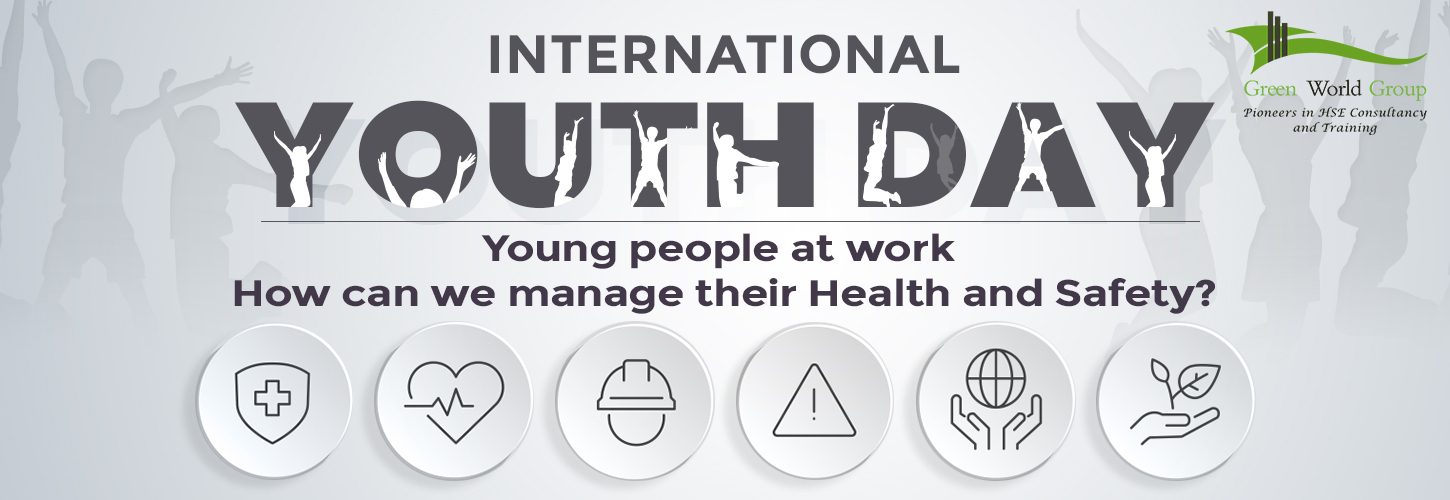
Young People at Work – How can we manage their Health and Safety?
New to the Job? Be Safe:–
The workplace is one location where danger exists, in the form of actively running machinery and being operated by humans. In a broader picture, industries are prone to accidents where every step involves a considerable level of risk for all age groups of employees. Young employees are especially highly vulnerable to severe injuries (from the past accidents statistics) due to the fact that being under 18, inexperienced, having wrong perceptions, and poor decision making in certain situations not only keeps them at risk but also others across different industries.
Some of the most common health risks listed based on a scientific study are MSD’s, respiratory, Dermatitis and toxicological problems, Stress and well-being, alcohol, drug use, & fatigue.
Young employees, by definition: –
HSE – Health & Safety at work law states that anyone under 18 is said to be “Young”
International Labour Organization (ILO) – Defines a young worker as the age group between 18 to 24.
Northern Ireland – The labour relations agency 1976 defines young workers as those who are over school-leaving age and are under 18.
India – Factories act defines, that a person’s age below 18 is considered as a Young.
The definitions and past statistics about the number of accidents at work involving young employees give us an idea about the seriousness of the issue. About 500 million people are young people around the world by 2018, accounting for 15% of the working population. Young employees are 40% more likely to suffer a work-related injury than older workers, in 2014, 370 million workers suffered non-fatal injuries.
Factors forcing young minds at work towards errors:
- Unemployment Rate – Throughout the world, the number of humans on earth breathing every day is increasing. This led young people to work in unorganized/informal sectors where there are no proper measures in place to look after these inexperienced minds.
- No Training – The absence of sufficient training comprising Standard operating procedures, policies, reporting procedures, and health risks associated with different work activities when young people enter the work area might be one more concern.
- Unaware of Reporting Procedures – As a newcomer to the workplace, a worker might not be good at reporting danger due to job insecurities. In some instances, organizations might not be communicating about the procedures too.
- Physically Weak – Between 15 & 24 is the age where the human body is in the developing stage and physically susceptible to various toxic and biological risks at the workplace.
- Social and Psychological Factors – Qualifications, family background, attitudes & individual risk perception vary from person to person at the workplace. Hence, each person might perform the work at the beginning on their own.
- Peer Influences – Beginners when they are at the workplace experience different behaviour’s from other newcomers and/or experienced people. Since young minds cannot judge these actions to follow or not, they might be in danger.
- Trying to Fit into the Job – To meet the expectations from the employer or to try to fit into the job, young employees might take shortcuts to finish the job faster, to perform the job in a different method in order to stand out from the others.
- Over Confidence – Young minds have the mindset that they can perform anything. Even if there is no training provided, these young employees who are inexperienced at work go to dangerous machinery and try to perform the tasks, leaving everyone in danger.
How can we manage young employees at work:
- Assessing the Work Area – Already the workplace might be assessed for all types of dangers but when young people are introduced at work, there is a need to review the workplace dangers.
- Empowering Young Workers – Educating about their own rights & Youth OSH champions at workplace improves the self-awareness. This can protect them and their peers in the workplace.
- Training – Training regarding Induction, job-specific training, and legislation, make all the people aware of the good practices and good behaviours at work.
- Awareness Programs – Making Health & safety a fun-filled activity yet maintaining the seriousness of the job through the awareness programs i.e., Safety week celebrations, safety campaigns, webinars from different industrial giants, rewarding best practices, arts, etc.
- Supervision – Although these people are well trained and educated, observing their behaviours and work methods is a key aspect especially while being involved with high-risk activities i.e., electrical risks, operating heavy machinery, and lone working.
- Data Analysis – Most of our today’s actions come up from the past data regarding the type of injuries, different ages, gender, and type of industries. Hence, recording and gathering such data plays a vital role in preventing injuries to youth in the future.
- Legislation & Regulation – All the unorganized sectors must be eliminated or provided with strict regulations to prevent youth to work.
- Tripartite Collaboration – Youth must be involved in all the national level and with other social partners to strengthen their OSH knowledge for an upward change. It’s also said that employers, national levels, and employees (youth) must work in a collaborated manner to deal with all the health and safety risks.
This International Youth Day let us pledge to keep our youth safe from all kinds of hazards since they are the ones who hold the key to creating a better and safer future.
Article written by:
Veldhi Sai, HSE Trainer / Consultant, Green World Group – Dubai